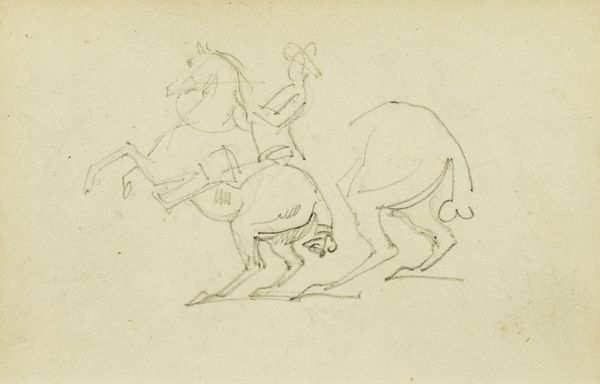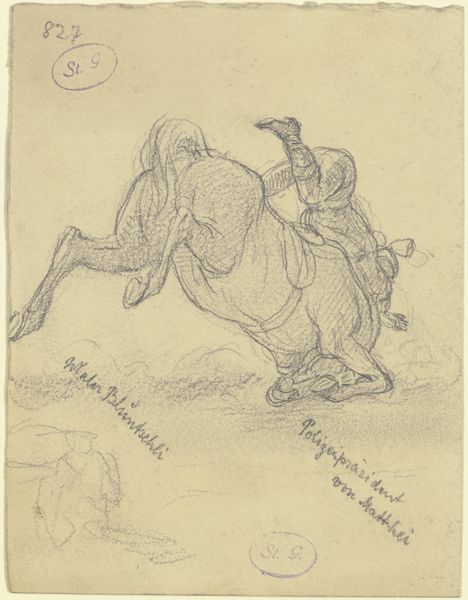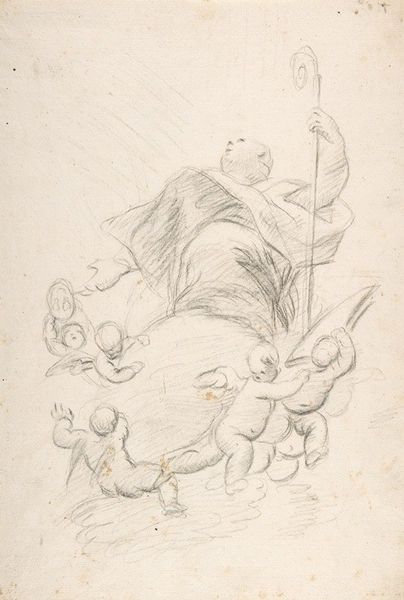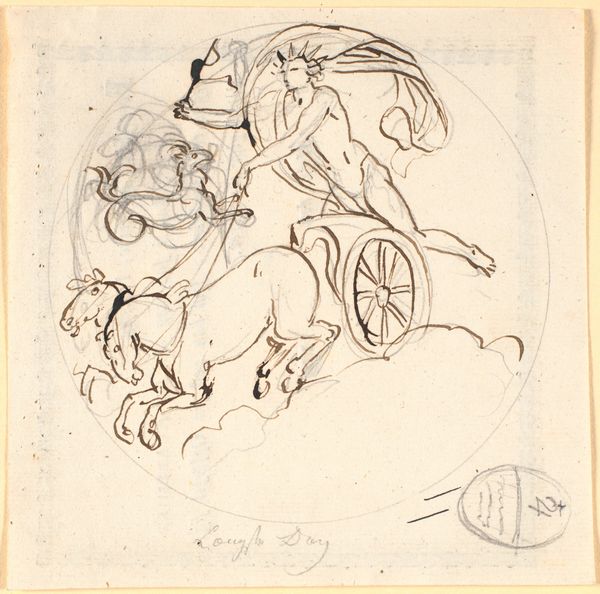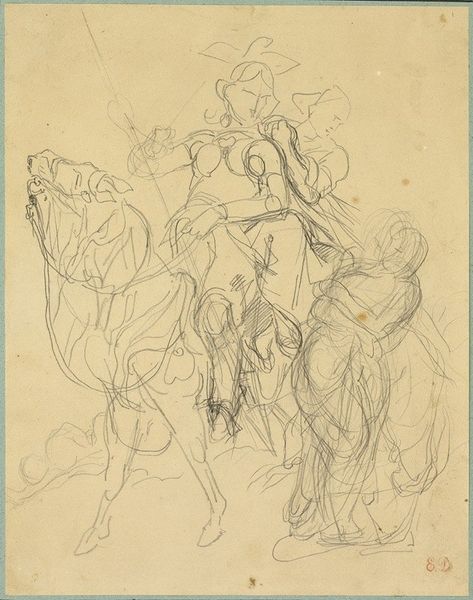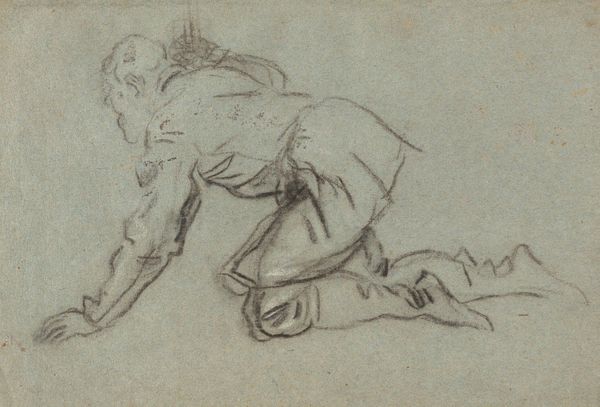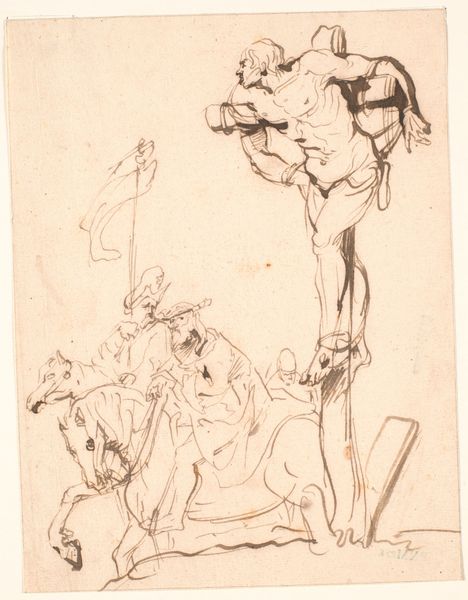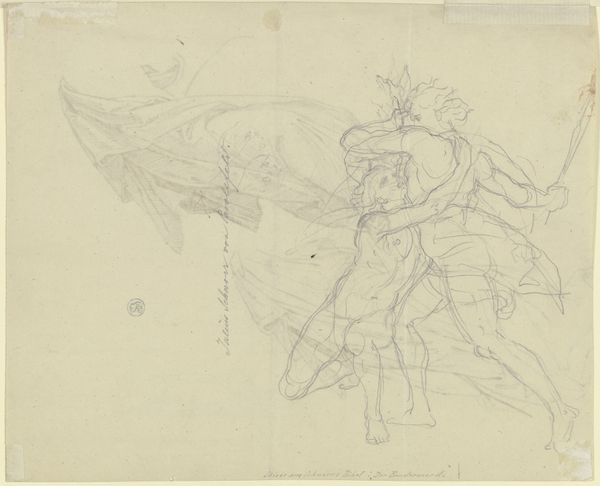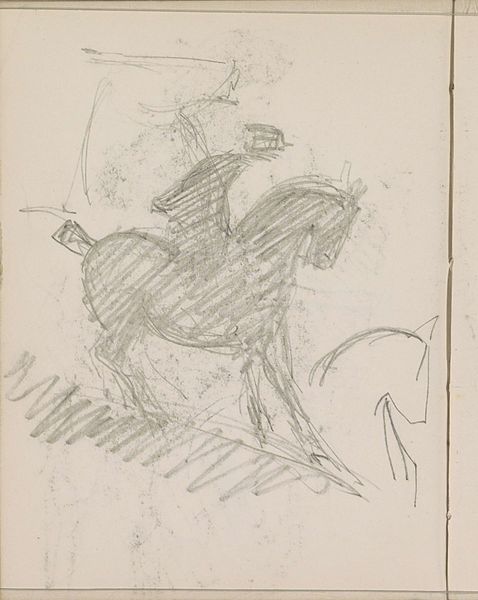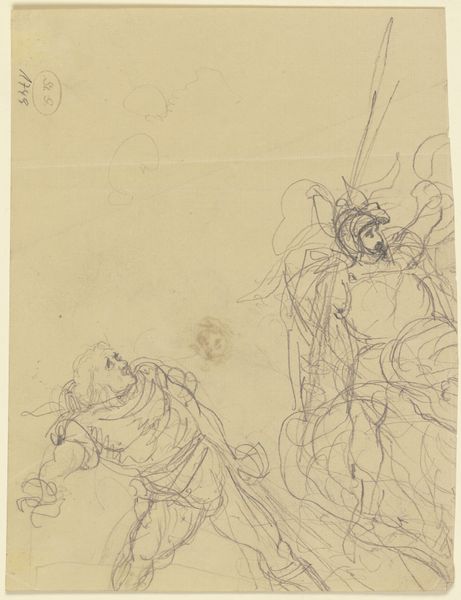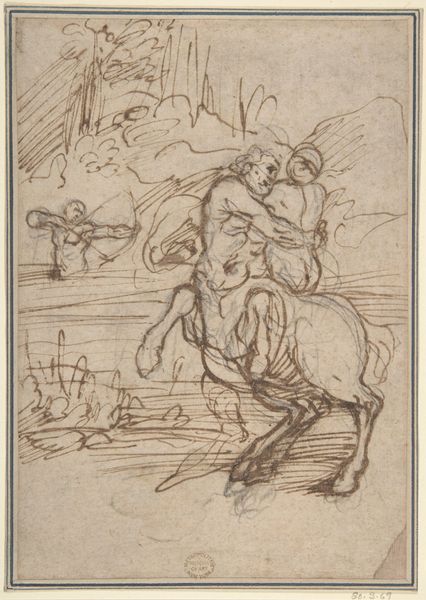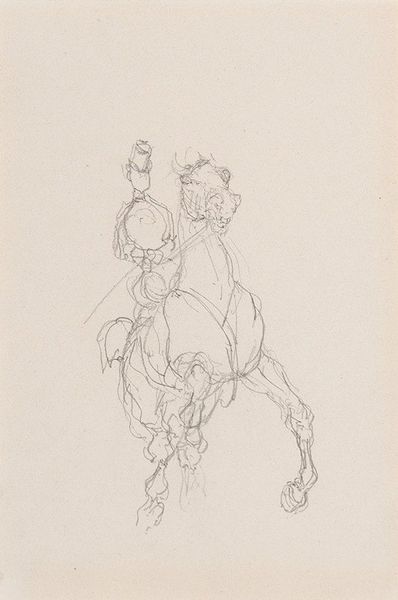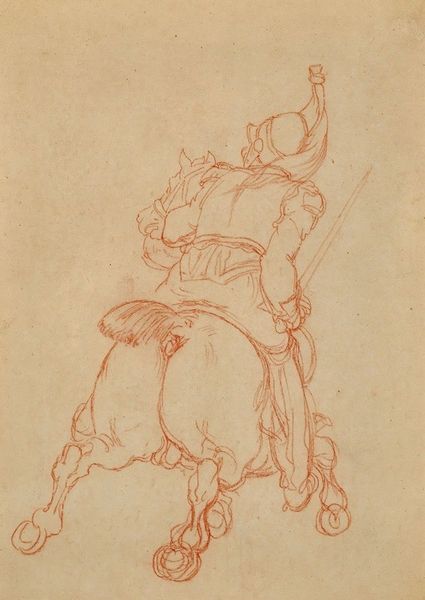
drawing, pencil
#
drawing
#
imaginative character sketch
#
light pencil work
#
quirky sketch
#
landscape
#
figuration
#
personal sketchbook
#
idea generation sketch
#
sketchwork
#
romanticism
#
pencil
#
sketchbook drawing
#
sketchbook art
#
fantasy sketch
#
initial sketch
Dimensions: height 154 mm, width 125 mm
Copyright: Rijks Museum: Open Domain
Curator: This is "Vallende ruiter," or "Falling Rider," a pencil drawing by Eugène Delacroix, created sometime between 1808 and 1863. It’s currently held here at the Rijksmuseum. Editor: The immediate feeling is chaotic. The lines are so active, almost violently rendered, that you sense the imminent crash before you fully register the horse and rider. Curator: Precisely! Look closely, and you'll notice the layered strokes. It speaks to Delacroix's process – a visible record of him working through the composition, searching for the right balance of energy and form. He's not aiming for a polished product, but rather a raw exploration. The relatively humble tool, a pencil, democratizes the medium itself. Editor: It is tempting to delve into the history of equestrian portraiture and challenge its associations with power and class through a sketch that seemingly captures a moment of failed domination. Think of the toppling of equestrian statues in revolutions! Perhaps here we are not just seeing a fall but a symbolic destabilizing. Curator: Interesting! And consider that it may be a study for a larger, unrealized painting. It prompts us to contemplate the labor involved in artistic creation – all the preliminary sketches and studies that underpin a finished masterpiece. It highlights the value in these working drafts that aren’t typically viewed as the final "product." Editor: I agree, and I wonder how this sketch, however spontaneous, also participates in constructing, or perhaps contesting, Romanticism’s fascination with turmoil and passion. A falling rider resonates powerfully with images of conflict and resistance found elsewhere in Delacroix’s ouevre. Curator: It truly shifts the emphasis from the finished painting to the iterative journey and the act of physically marking the page with pencil. It reminds us art-making is work. Editor: And, in the midst of an action, captured imperfectly, lies a potent vulnerability. A testament against those traditional paintings of triumphant rulers. Curator: Exactly, thank you for contextualizing what's visibly represented within this small work, and allowing me to showcase the visible hand of the artist. Editor: Thank you. Thinking about social implications with materials has given a renewed context to this Romantic work of art.
Comments
No comments
Be the first to comment and join the conversation on the ultimate creative platform.
